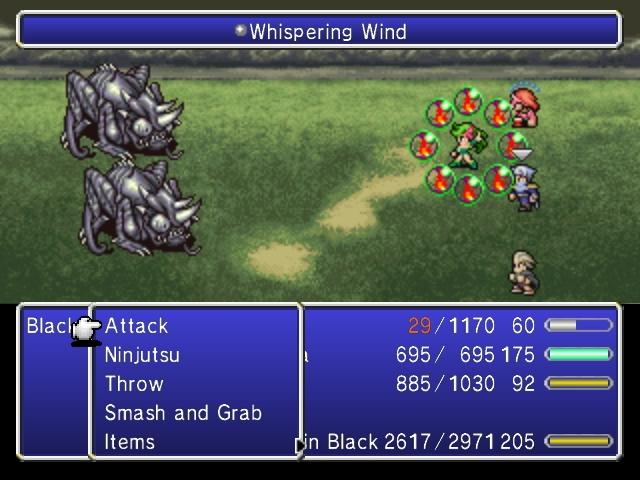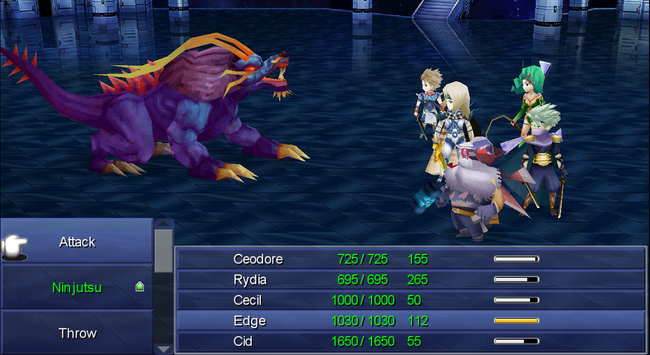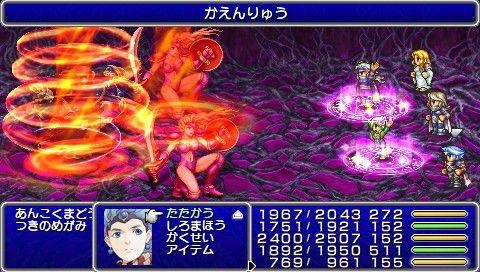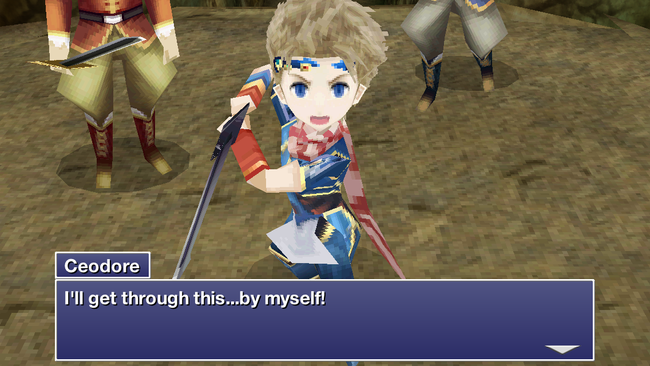Final Fantasy IV: The After Years Should Not Be An Afterthought
With the recent console releases of the Final Fantasy Pixel Remaster series last month, Square Enix has sold more than two million copies of the first six Final Fantasy titles on Steam, mobile, and now on PlayStation 4 and Switch consoles over the last two years. If you have an inkling to check out a Final Fantasy game, it is now incredibly convenient to check out these classic titles. They boast a refreshed presentation and quality of life enhancements – even if the jury is still out on whether these can truly be considered “definitive.”
Throughout the discussion of content missing from these titles, I’m reminded of an entire game that was seemingly left behind: Final Fantasy IV: The After Years. The direct sequel to Final Fantasy IV, this mobile-title-turned-Wiiware-release was ahead of its time in terms of the presentation, storytelling, and gameplay systems that should be readily available to gamers on modern consoles.

Designed as an episodic mobile title, Final Fantasy IV: The After Years was first released in Japan in 2008 before being ported to the Wii in North America in 2009. The title was remade for the PlayStation Portable in 2011, bundled with Final Fantasy IV and another new title to serve as a bridge between the games, the aptly named Final Fantasy IV: Interlude. The After Years would be remade again a few years later, this time for mobile and PC via Steam in 2015. This version featured a visual style similar to the DS remake of Final Fantasy IV released nearly a decade prior. In total, the game has essentially three versions with distinct visual styles: Wii (2009), then PSP (2011) and Steam/Mobile (2015).
Set seventeen years after the original game, the story centers around Ceodore, the teenaged son of Cecil, the King of Baron and protagonist from the original game. During the first chapter, Ceodore embarks on a quest to prove his worth to become a member of the Red Wings, the kingdom’s aerial fleet. While he is away on his journey, a mysterious force descends upon Baron and other locations throughout the game world. Heralded by the reappearance of the second moon, Ceodore takes on a quest to find his father.

The title was initially released in episodic installments in Japan, with players checking in on the original cast, seeing how they have grown and matured over the years. Each individual chapter contributes to the larger narrative, and sees the cast of both titles converging towards the end to take on the alien force causing the disturbance on the planet. Frankly speaking, the story is easily the weakest aspect of the game. While the arc of the narrative hits some emotional beats quite well, all too often the sequence of events and some character reveals feel more like fanfiction than a continuation of one of the strongest stories produced by the franchise.
Yes, it is great to see our favorite characters - especially with some of them all grown up, but the narrative is a tough sell. It simply feels too much like a retread of story beats and locations from the original game. While the last chapter is somewhat redemptive, it requires a lot of slogging through dungeons – repeatedly – to get to. It reminds me of the slow burn horror of watching your favorite TV series or movie announced for a reboot or sequel. The gang’s all here, but to what end? Do the diminishing narrative returns squander the entire experience?
Thankfully, the presentation and gameplay pick up the slack. If a Pixel Remaster of this game were to come about, it wouldn’t require much effort given the updated visuals presented in the Wii version which are a middle ground between the original graphics and the remastered versions. Character sprites and portraits are well drawn, and the graphical assets are re-used, but with an added visual touch. I find the PSP version to look too similar to something created with RPGMaker. Square Enix could easily use Final Fantasy IV Pixel Remaster’s soundtrack, but would need to update tracks created specifically for the sequel by Junya Nakano.

This iteration of Final Fantasy IV’s Active Time Battle system boasts some interesting tweaks, including moon phases and band attacks. As the phase of the moon changes, it can strengthen or weaken types of abilities. When a full moon occurs, physical attacks are weakened and Black Magic is strengthened, adding a bit of strategy and timing to the game. The more interesting mechanic is the Band system, essentially team or partner attacks similar to Chrono Trigger. While some attacks are learned through the story, others are found with trial and error. These two wrinkles add a level of depth to the proceedings without over-complicating or weighing down the exciting and frequent combat.
For such a divisive game, it’s odd to see so many iterations and advocate for another remake or port. But despite the narrative flaws and reliance on callbacks, The After Years is a part of the Final Fantasy IV lore and should not be relegated to the same dustbin as Dirge of Cerberus. In 2023, though, it’s only practical to play the DS style of the game on Steam or Mobile. This version of the game is arguably more cinematic than the other versions, but the blocky graphics and character models are unappealing. If playing The After Years once finised with Final Fantasy IV Pixel Remaster, this version’s encounter rates and sluggish camera seem inhospitable, if not hostile – and that’s without taking advantage of the Boost options to affect encounter and experience point rates.
It seems clear that with the Pixel Remaster project, Square Enix is focused on presenting versions of these games that hew close to the content available at launch. The bonus content of dungeons and abilities included in the subsequent ports of these games are entirely absent from the Pixel Remaster versions. Yet The After Years is not bonus content, even if it sometimes feels that way. It’s a separate game, and full on sequel, similar to Final Fantasy X-2.

Square Enix has already made this game three times. It has the assets available to create a Pixel Remaster version of Final Fantasy IV: The After Years that is visually congruent with the first game. They could sell it separately or boldly include it with the original game via patch. Without making this game more accessible to gamers, The After Years runs the risk of becoming an afterthought. Instead, perhaps Square Enix can take this opportunity to address some of the complaints levied against the title and give us a truly definitive version of this indulgent revisit to Cecil, Kain, and friends.